Chapter 38 Pediatric Questions and Answers Complete
Document Content and Description Below
Which statement regarding pediatric injury prevention is most accurate? Ans- Injury prevention and accident prevention are not the same You have been called for a 2-year-old girl who has been sick ... for two days. In preparing to assess the patient, it is important that you recognize that patients in this age group generally: Ans- Do not like having clothing removed A 5-year-old male is drooling with stridorous respirations and has a fever of 104degreesF. Which statement made by the patient would concern the EMT most? Ans- "It hurts to swallow." While performing the reassessment of a 2-year-old male who is severely dyspneic, you note that he is now unresponsive and not breathing. He has a heart rate of 32 beats per minute and his skin is cool and diaphoretic. Which instruction would you provide to another EMT who is helping you transport the patient? Ans- "Let's start chest compressions and positive pressure ventilations." When you form an initial impression for a pediatric patient based on consciousness, breathing, and color, you are following: Ans- The Pediatric Advanced Life Support (PALS) method While attempting resuscitation of a baby with possible SIDS, which question would be appropriate for the EMT to ask the mother? Ans- "Were there any problems with the pregnancy or his birth?" When assessing a central pulse of a young child, the EMT would palpate the: Ans- Femoral pulse You suspect a very sick child to be in shock. His skin is dry, radial pulse weak, and blood pressure low. Which statement made by the parents would reinforce this suspicion? Ans- "He has had diarrhea for three days." You are assessing the pupils of a 5-year-old who fell off a bed while playing. Which of the statement would be most appropriate prior to performing this assessment? Ans- "I am going to use this light to look into your eyes." You are treating a 6-month-old patient who was accidentally dropped down a flight of steps, when her mother stumbled at the top of the stairway. The infant will only open her eyes and moan to deep painful stimuli, and tries to withdraw from the pain. Given these findings, you calculate her Pediatric Glasgow Coma Scale score to be: Ans- 8 You are assessing a 6-year-old girl with possible pneumonia. She has labored breathing and a fever of 102degreesF. When you are assessing and classifying her respiratory status, which finding would provide the strongest evidence that she is in respiratory failure? Ans- Altered mental status A 5-year-old boy who is drooling has suspected epiglottitis. His pulse rate is 144 beats/min, respirations are 46 breaths/min, and blood pressure is 110/52 mmHg. The patient is noncompliant with the pulse oximeter, but his skin is normal colored. Which statement made by the EMT indicates proper care of this patient? Ans- "Let's give him some supplemental oxygen." You have been called to a preschool for a seizing child. On arrival, staff directs you to a bed in which a 4-year-old boy is lying. Staff state that the child began making "funny" noises in his sleep, then began to seize for approximately 60 seconds. Your assessment indicates that the boy is responsive to painful stimuli and is breathing, but has gurgling sounds coming from the upper airway. His radial pulse is rapid and strong, and his skin is cool and diaphoretic. What is your immediate action in caring for this child? Ans- Suction the airway Assessment of a 4-year-old reveals him to be unresponsive with no spontaneous respirations or pulse. Your immediate action would be to: Ans- Start chest compressions You are transporting a critically ill 4-year-old patient. Regarding the panicked and upset mother, you would: Ans- Secure the mother in the "captain's chair" of the ambulance, behind the patient, during transport to the hospital A mother asks you what causes her son to get bronchiolitis. You would inform her that this infection is caused by: Ans- Respiratory syncytial virus After placing a small rock in her mouth, a 7-month-old girl begins to choke. You are on scene within minutes and find her unresponsive in her mother's arms. You attempt to provide ventilations with the bag-valve mask, but are unsuccessful after two attempts. What would your next action be? Ans- Start cardiopulmonary resuscitation The EMT is properly assessing the breathing of a 3-year-old when he: Ans- Counts the respiratory rate for 30 seconds and multiplies by 2 A 7-year-old with a fever of 101.3degreesF and shortness of breath has a patent airway, but tachypneic respirations. His heart rate is 132 beats/min, respirations are 28 breaths/min, and blood pressure is 94/60 mmHg, with an SpO2 of 96% on room air. Crackles and wheezes are noted in the base of the right lung only. Given this presentation, you would suspect and treat the patient for: Ans- Pneumonia You have been called for a 4-year-old female who is short of breath. Her mother informs you that she has had a fever and runny nose for two days and today began to have difficulty breathing. Furthermore, the mother is having a difficult time waking her daughter up. You find the girl lying in bed with snoring respirations despite use of the head-tilt, chin-lift airway maneuver. Your assessment reveals her to be responsive to painful stimuli and breathing at 12 times per minute with minimal chest and abdominal rise and fall. Her skin is warm to the touch with cyanosis around the lips. Your partner informs you that her heart rate is 124 beats per minute. What is your immediate action in caring for this child? Ans- Insertion of a nasal airway A 6-year-old male has a decreased level of consciousness. His mother states that the family does not have health insurance, so they did not take him to the hospital last week when he started vomiting and had copious amounts of diarrhea. She reports that he has not had anything to eat or drink since then. The patient has snoring respirations that are rapid and inadequate. His radial pulse cannot be located, and his carotid pulse is rapid and weak. His capillary refill is 5 seconds and his skin is cool to the touch. What would your first intervention in caring for this child be? Ans- Open the airway using the head-tilt, chin-lift maneuv [Show More]
Last updated: 1 year ago
Preview 1 out of 25 pages
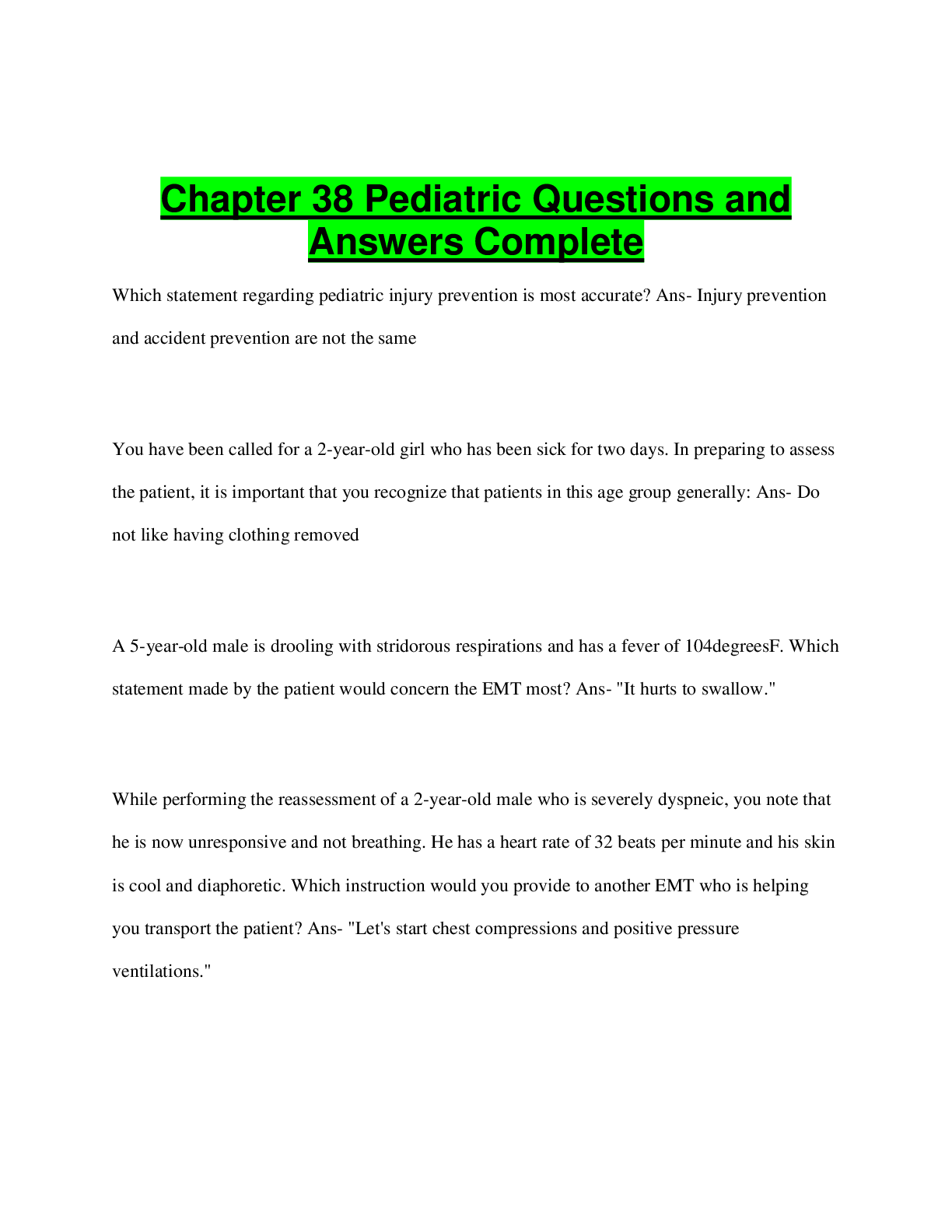
Reviews( 0 )
Document information
Connected school, study & course
About the document
Uploaded On
Feb 12, 2023
Number of pages
25
Written in
Additional information
This document has been written for:
Uploaded
Feb 12, 2023
Downloads
0
Views
56


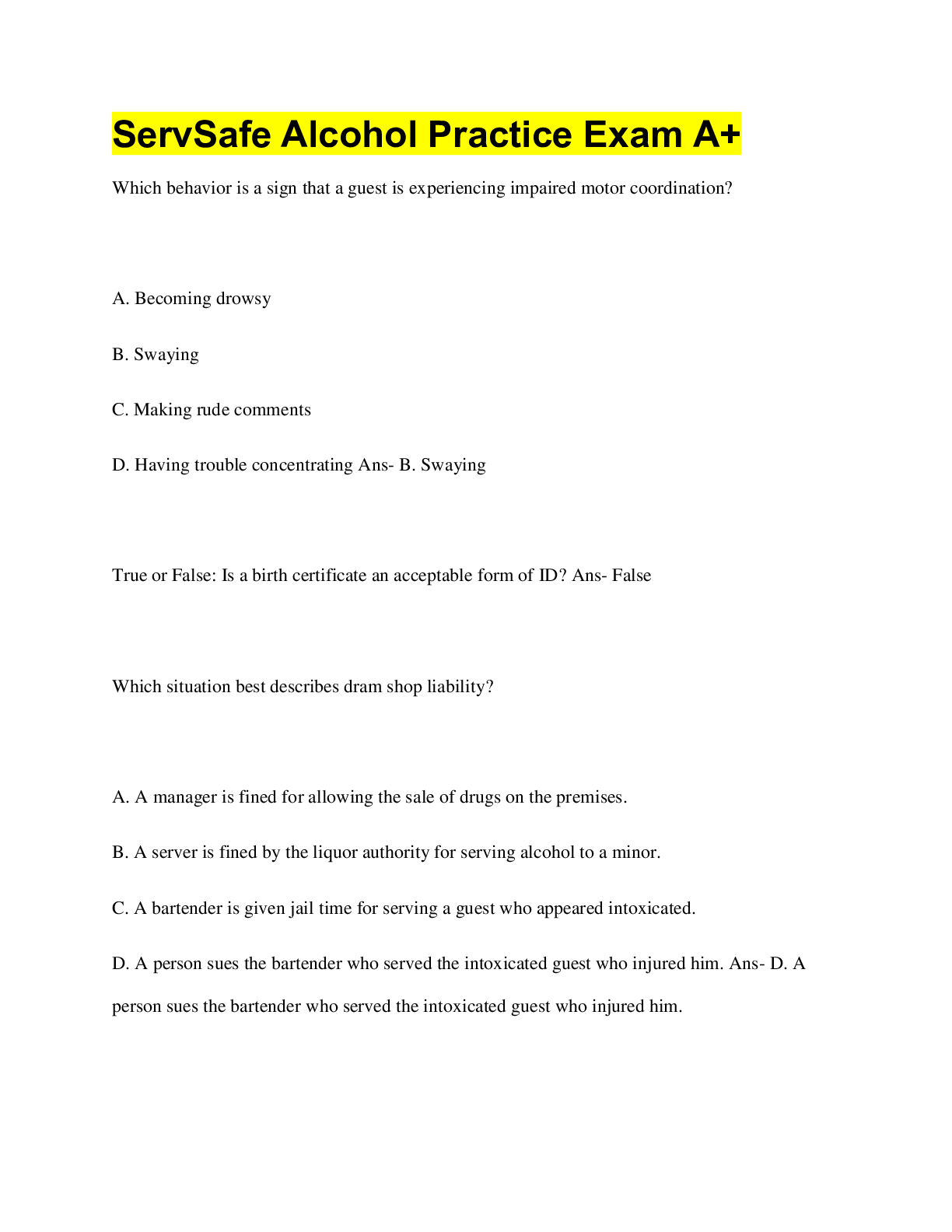
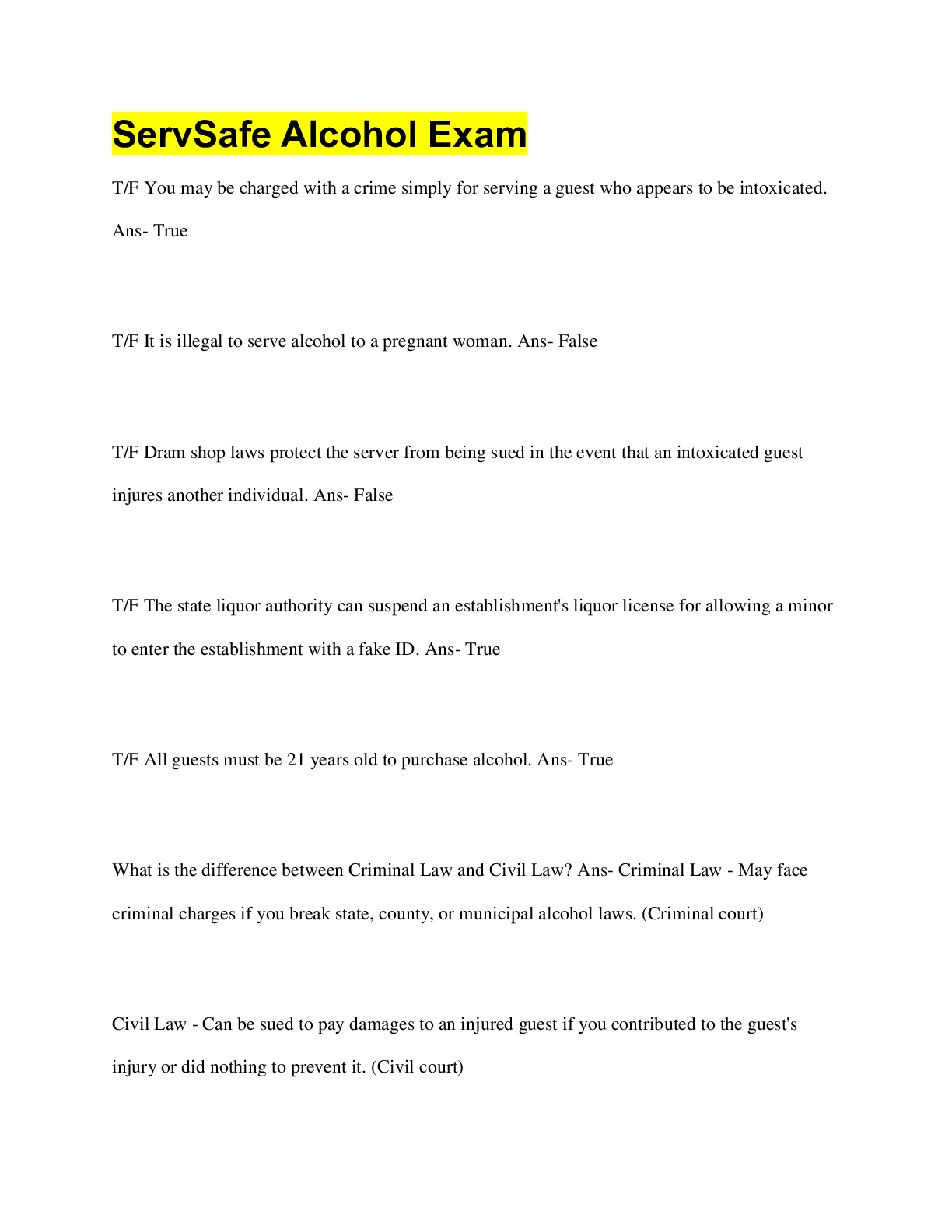
.png)
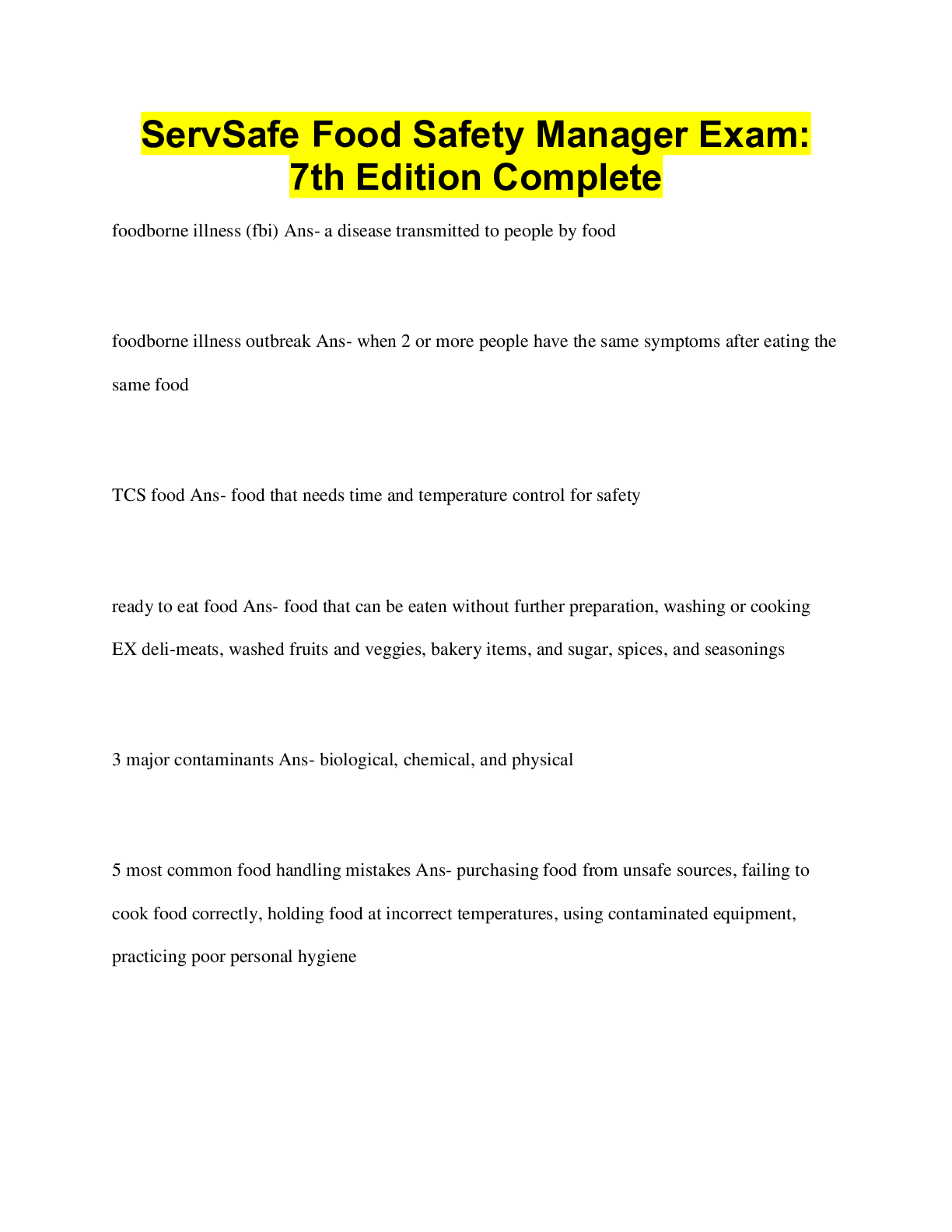
.png)

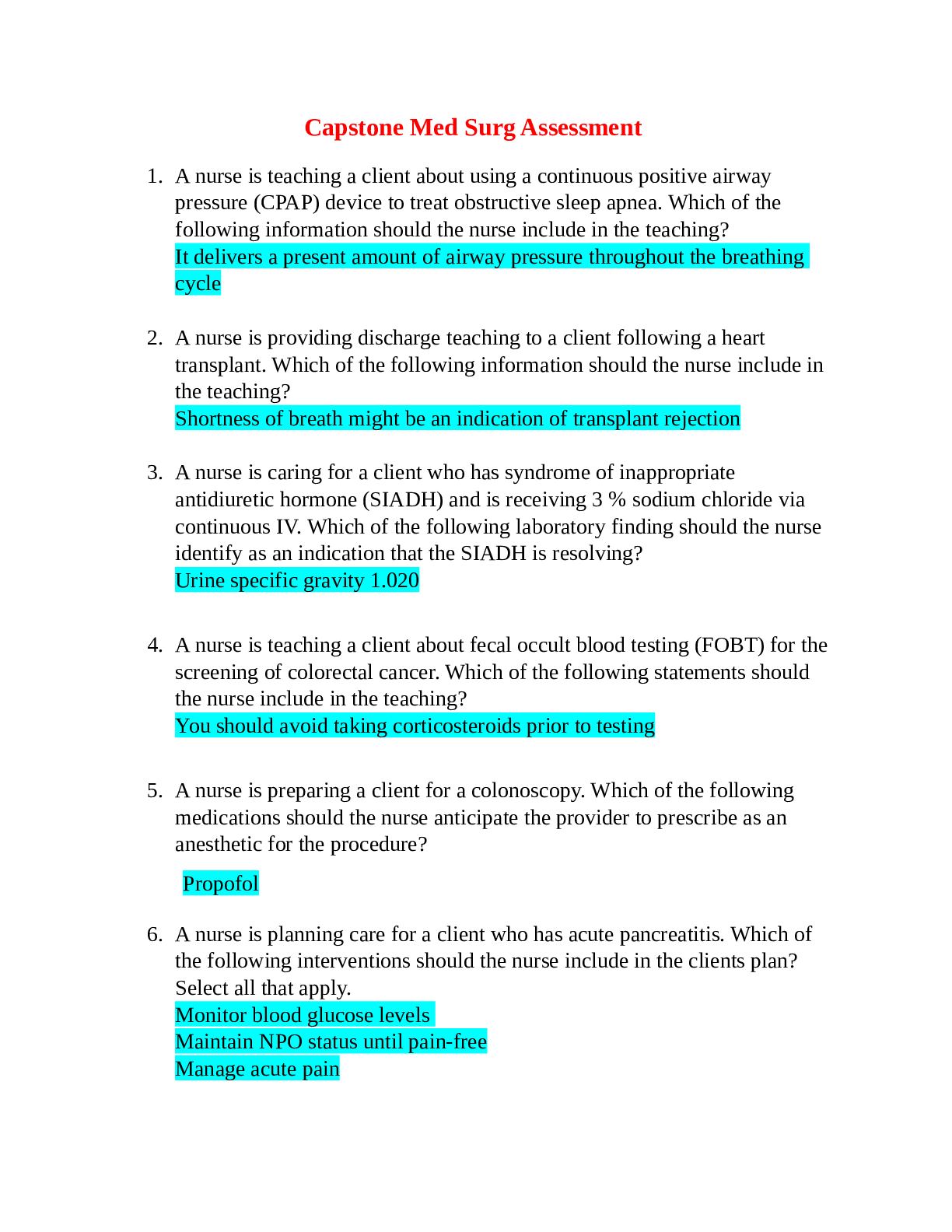

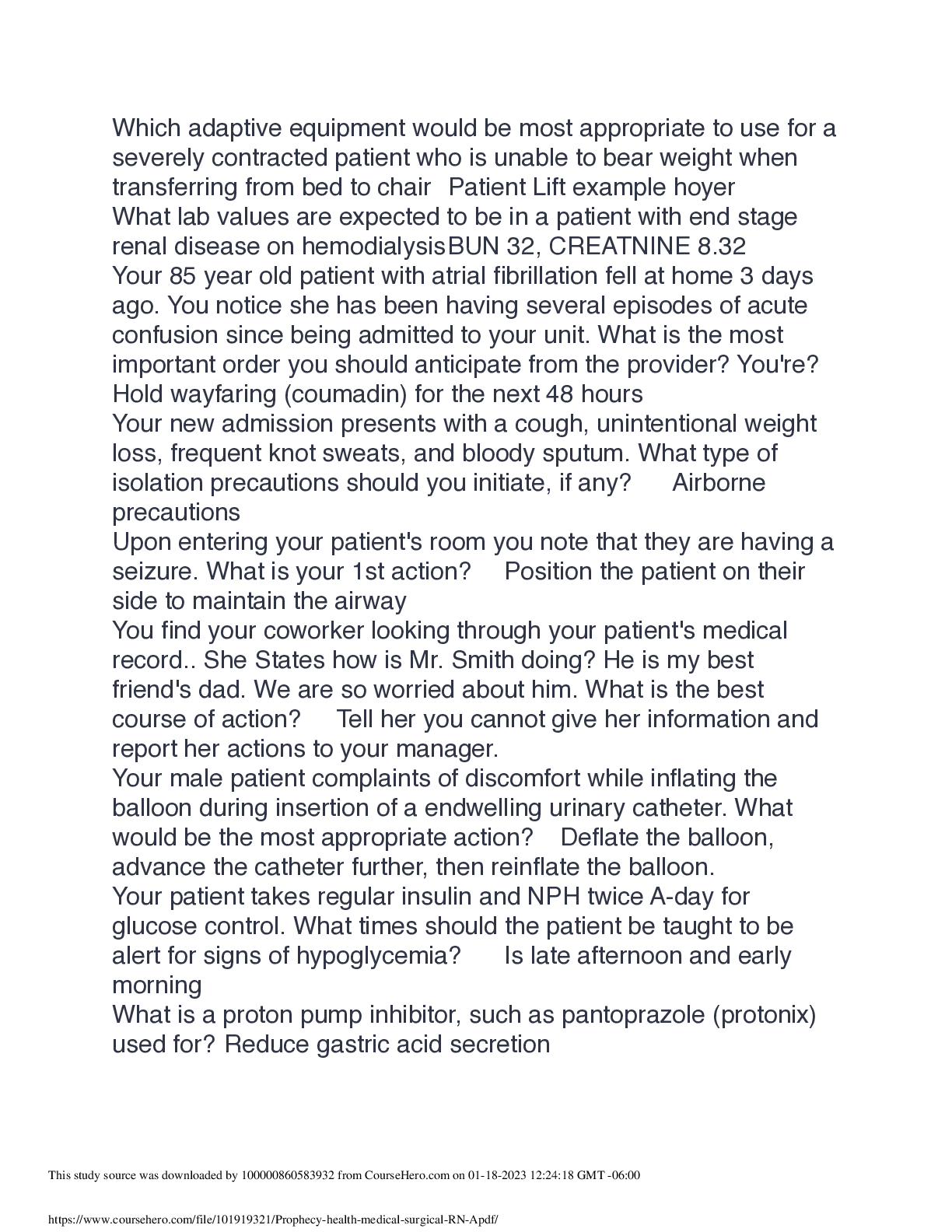

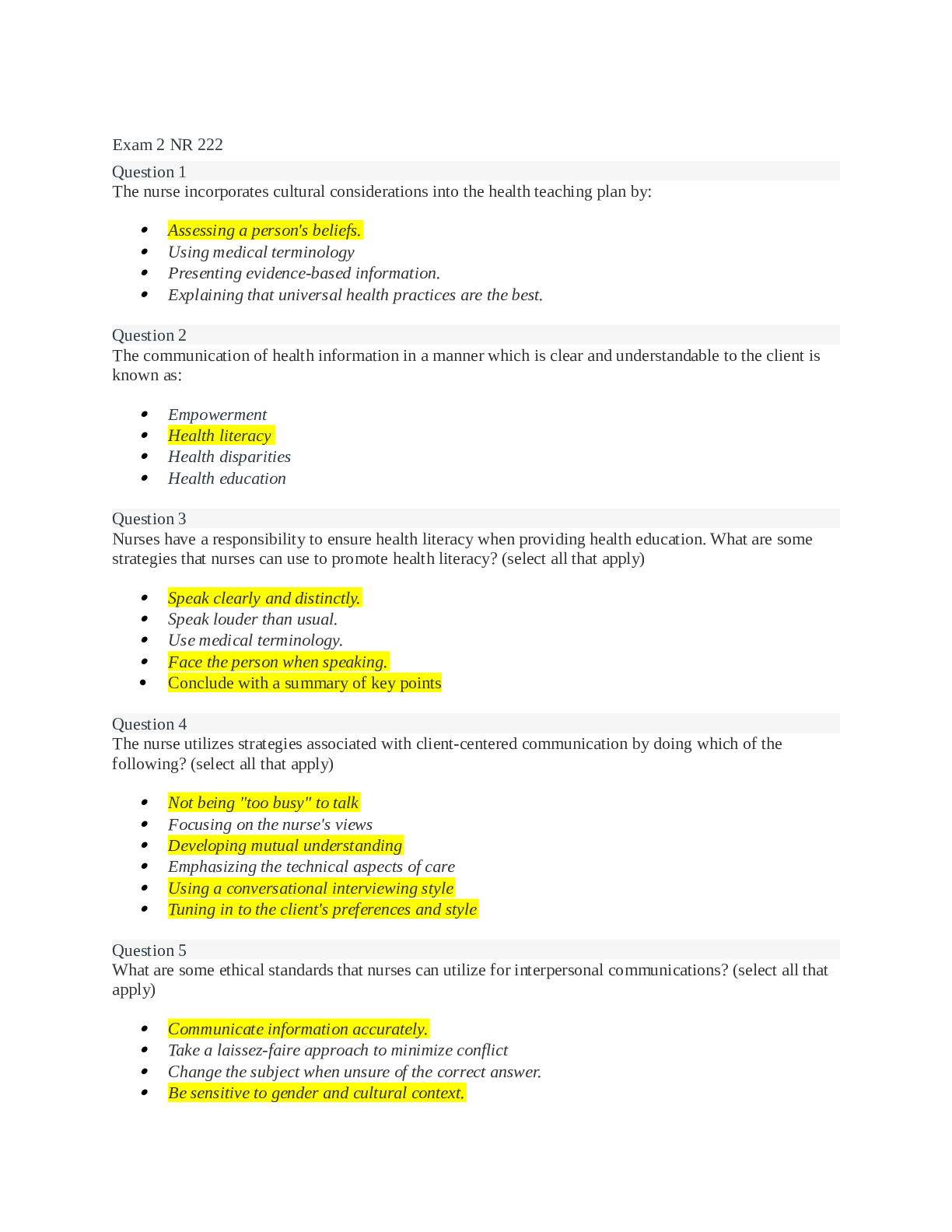

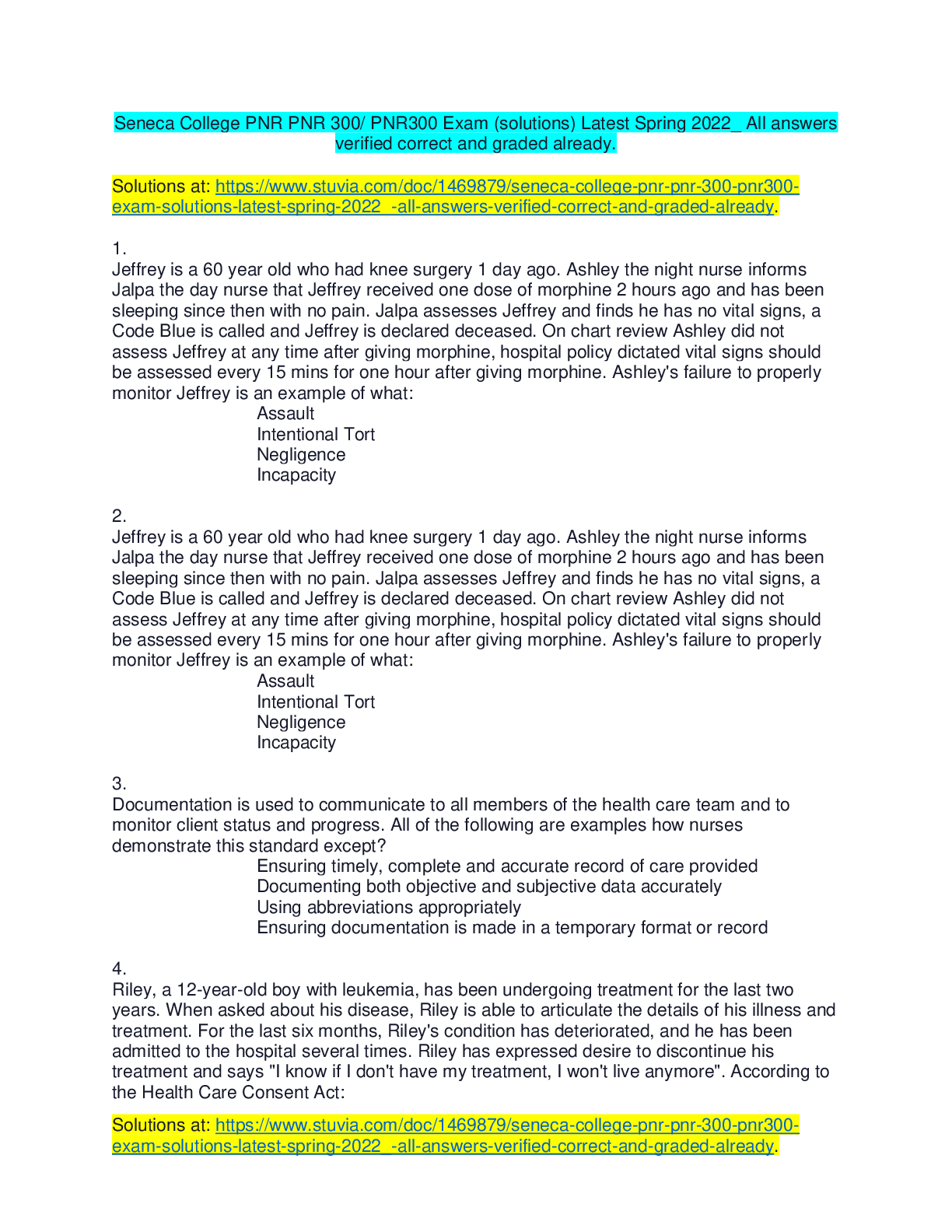
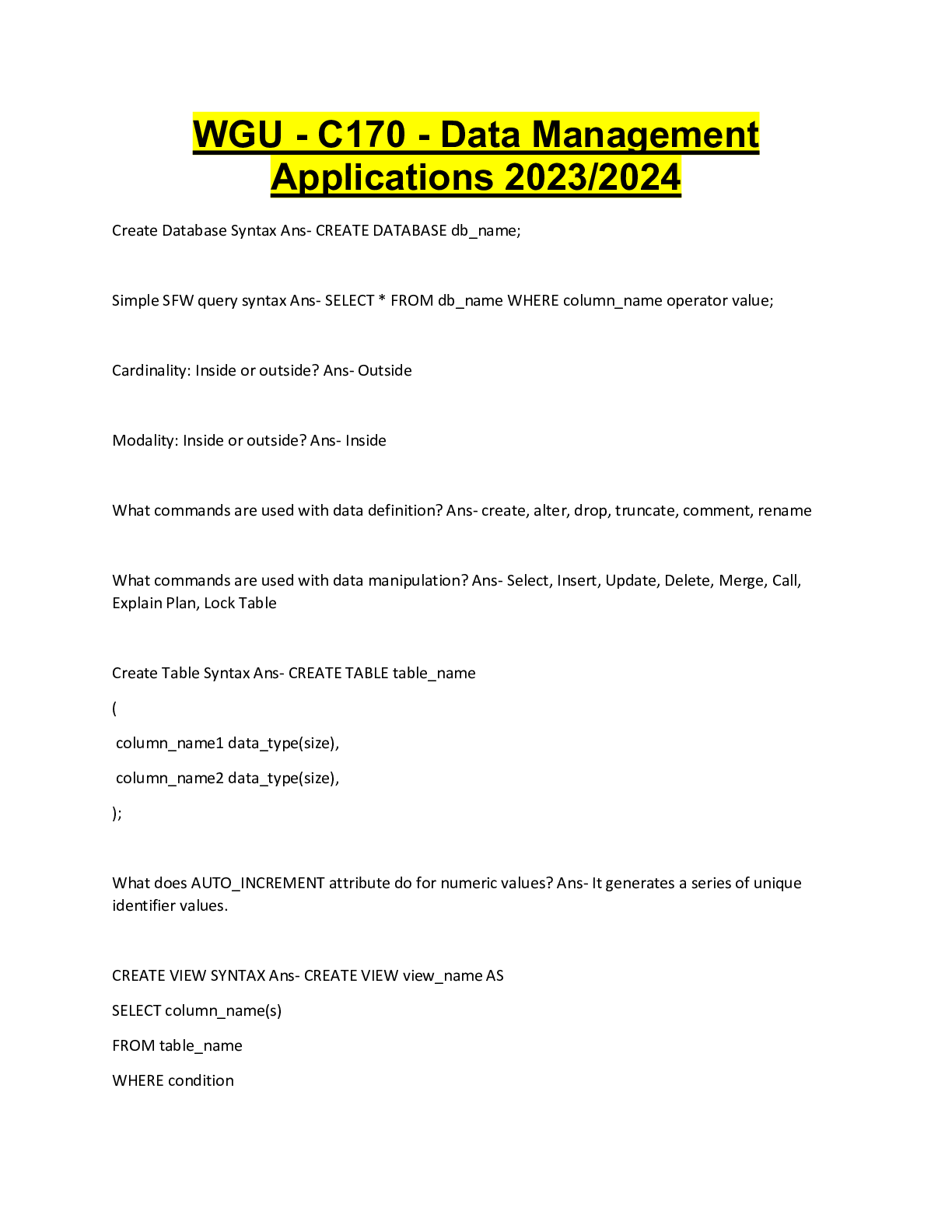

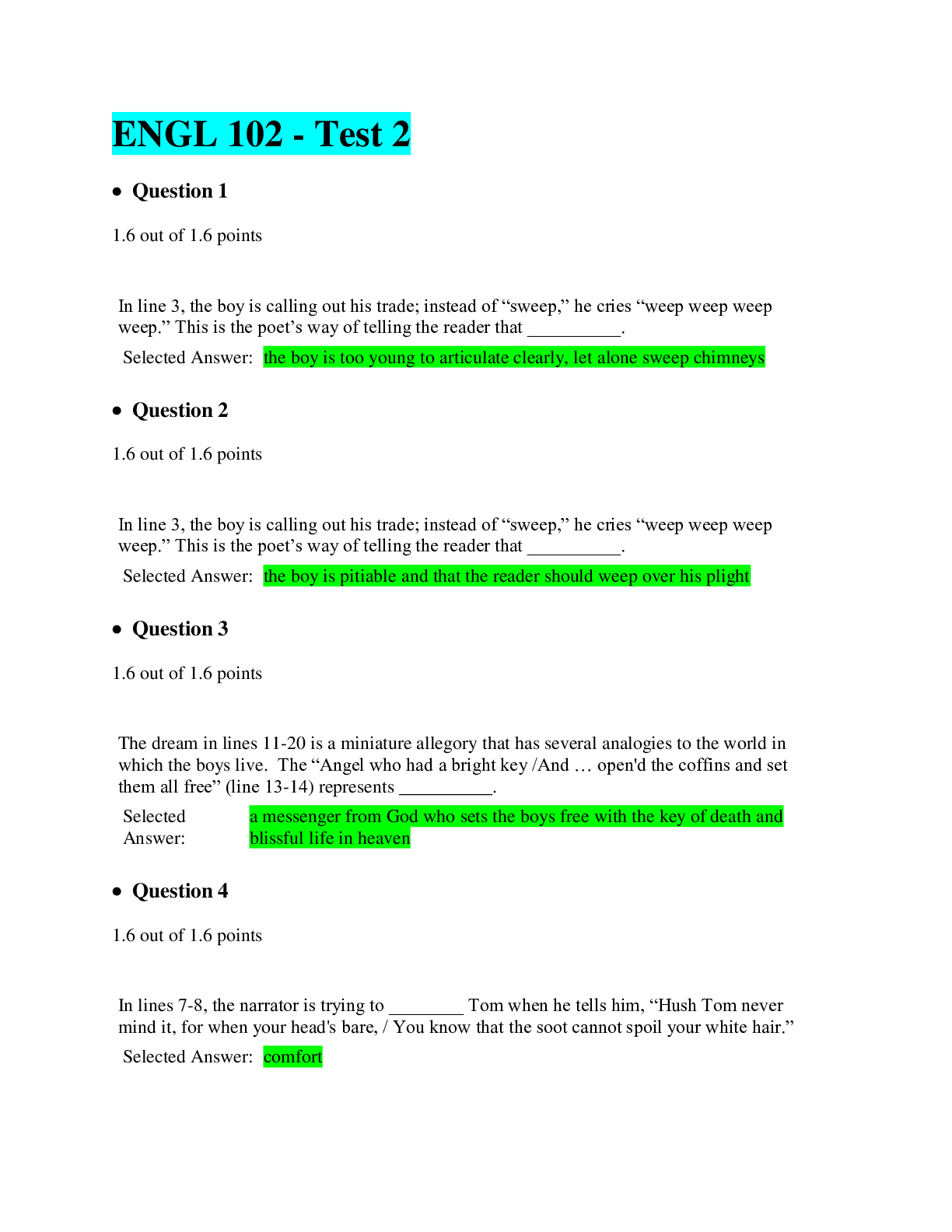
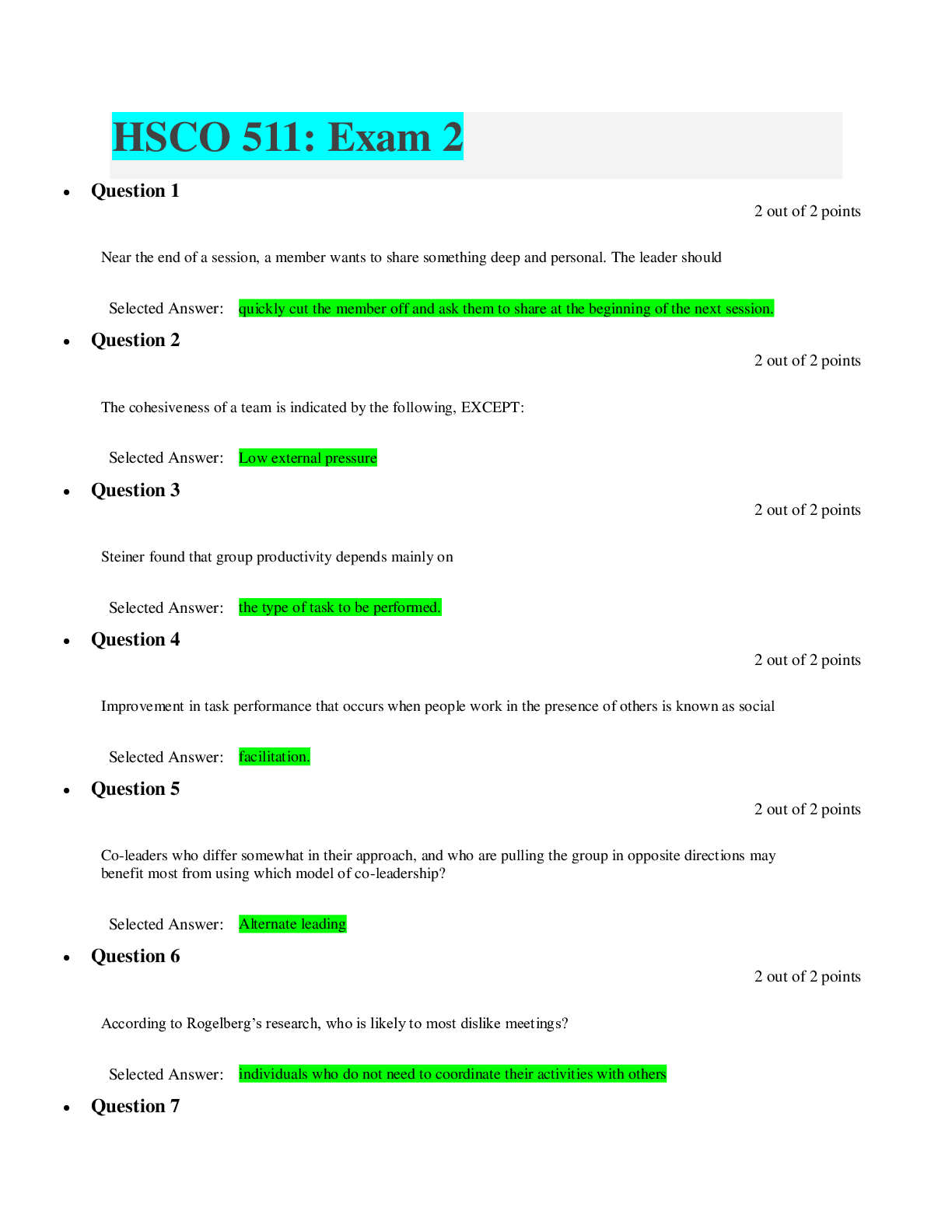
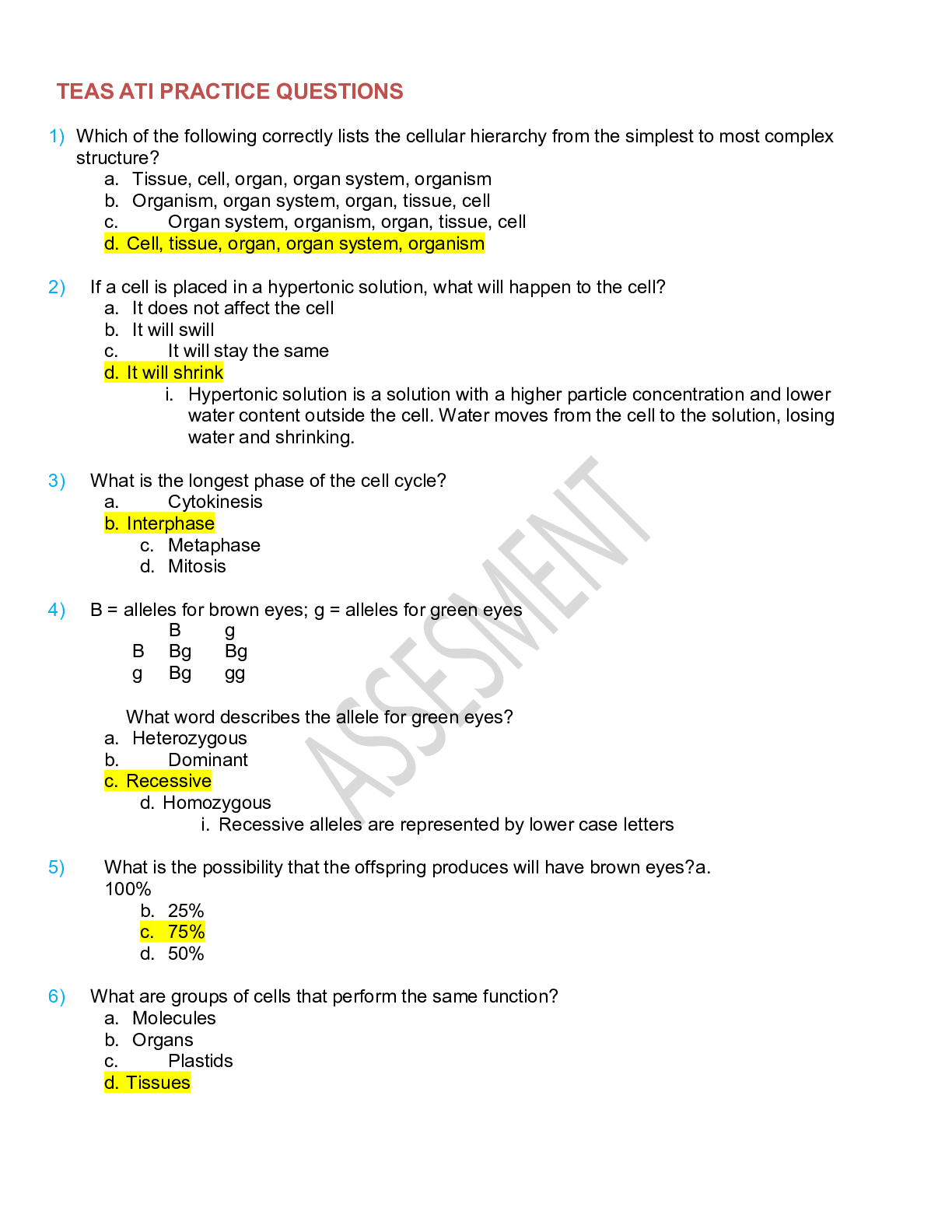
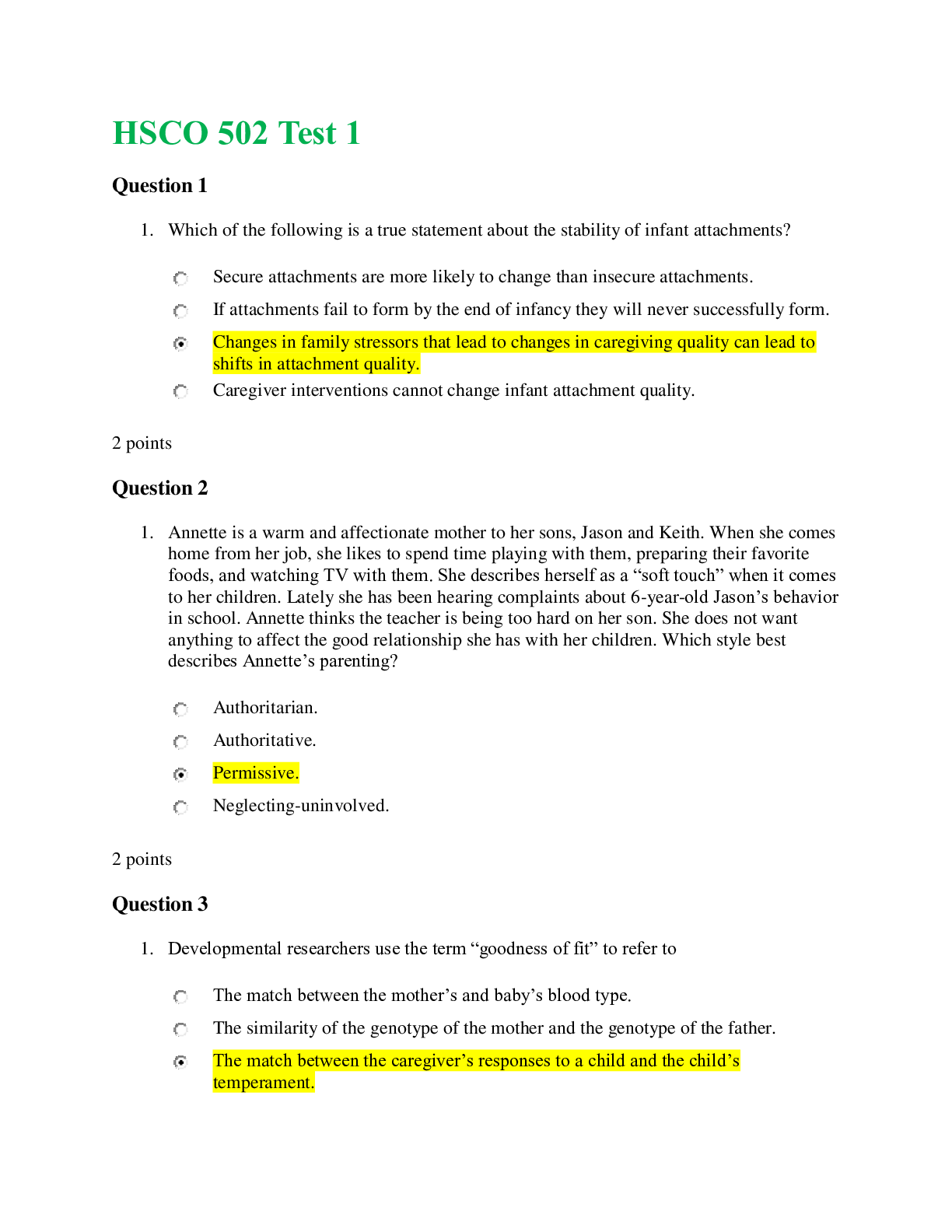
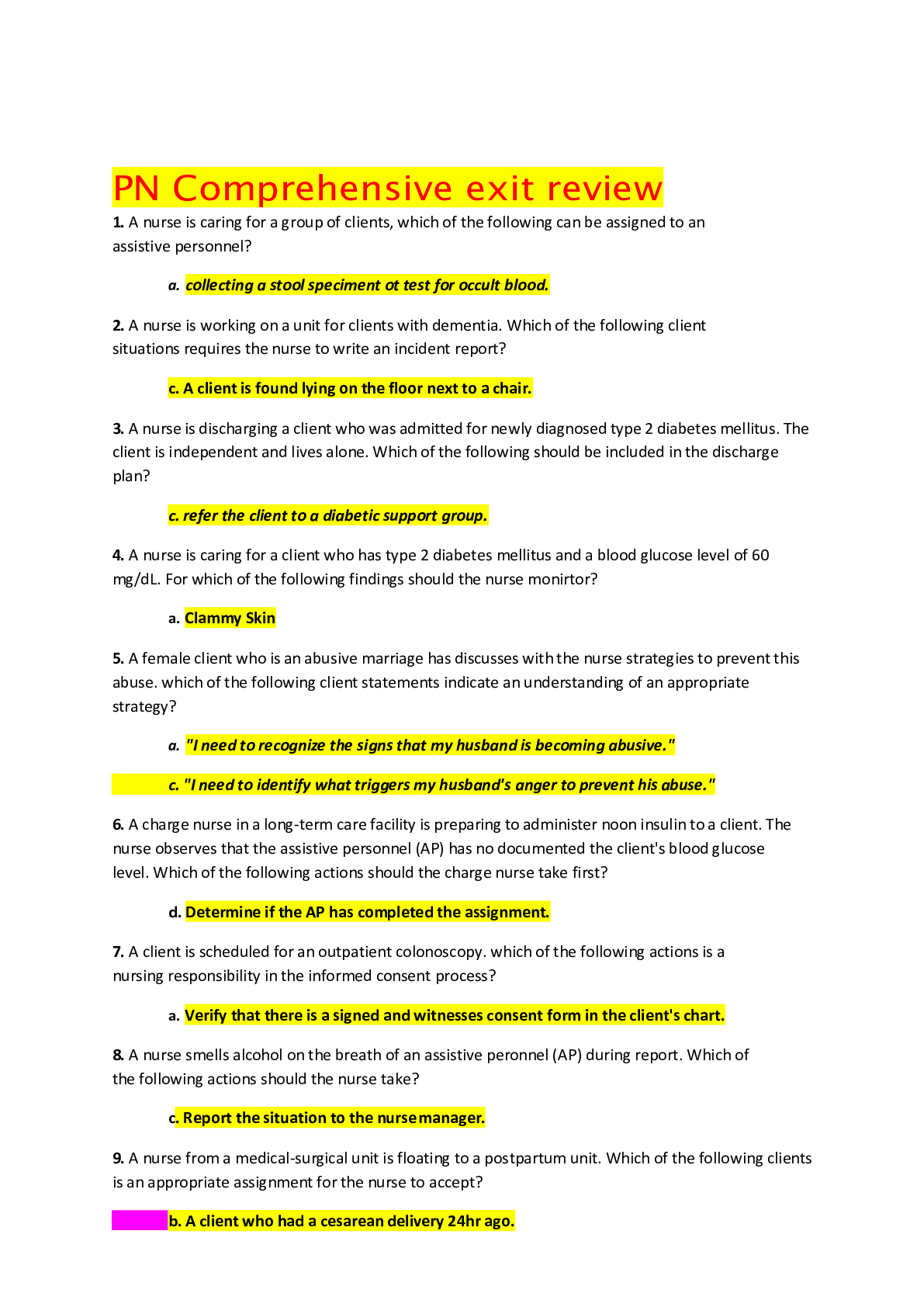

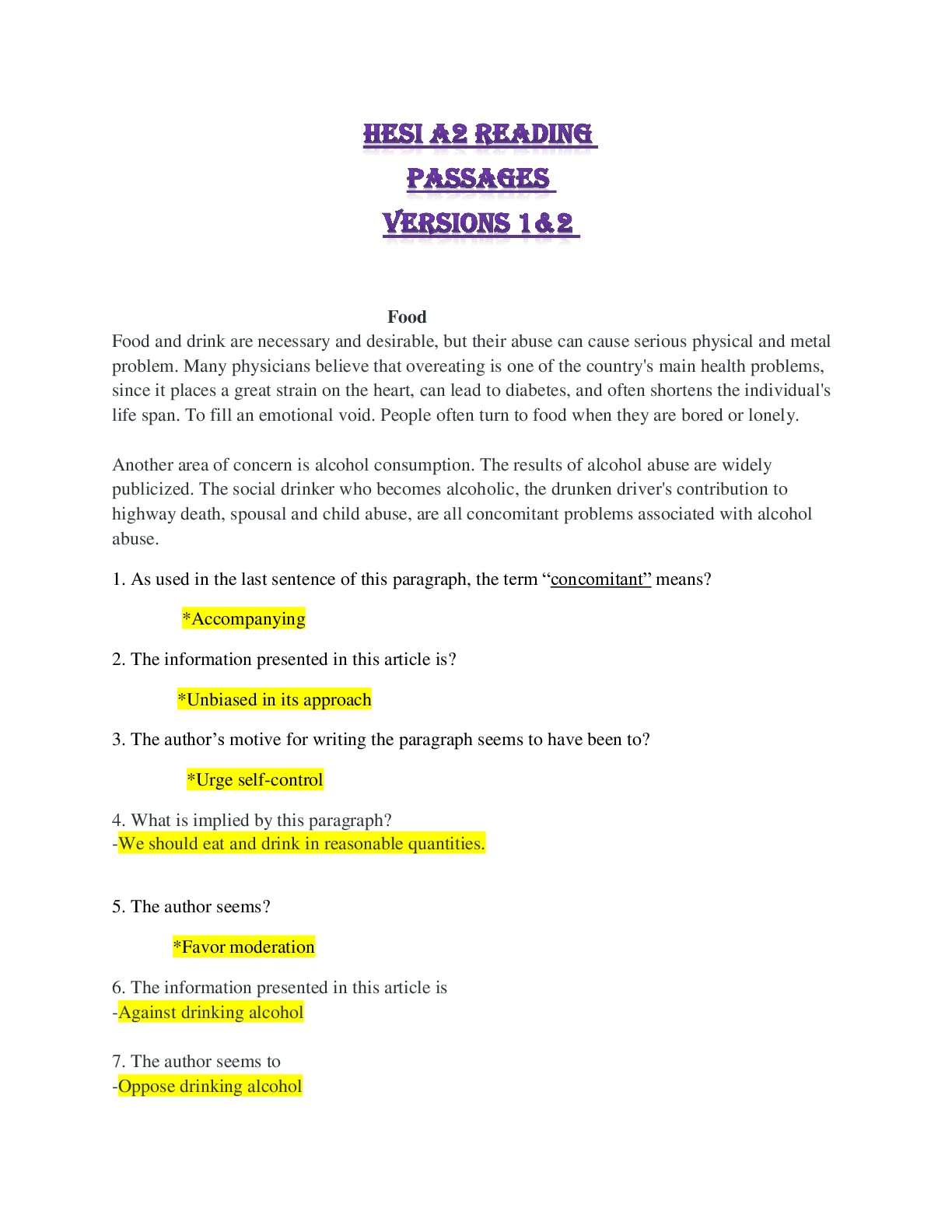
.png)


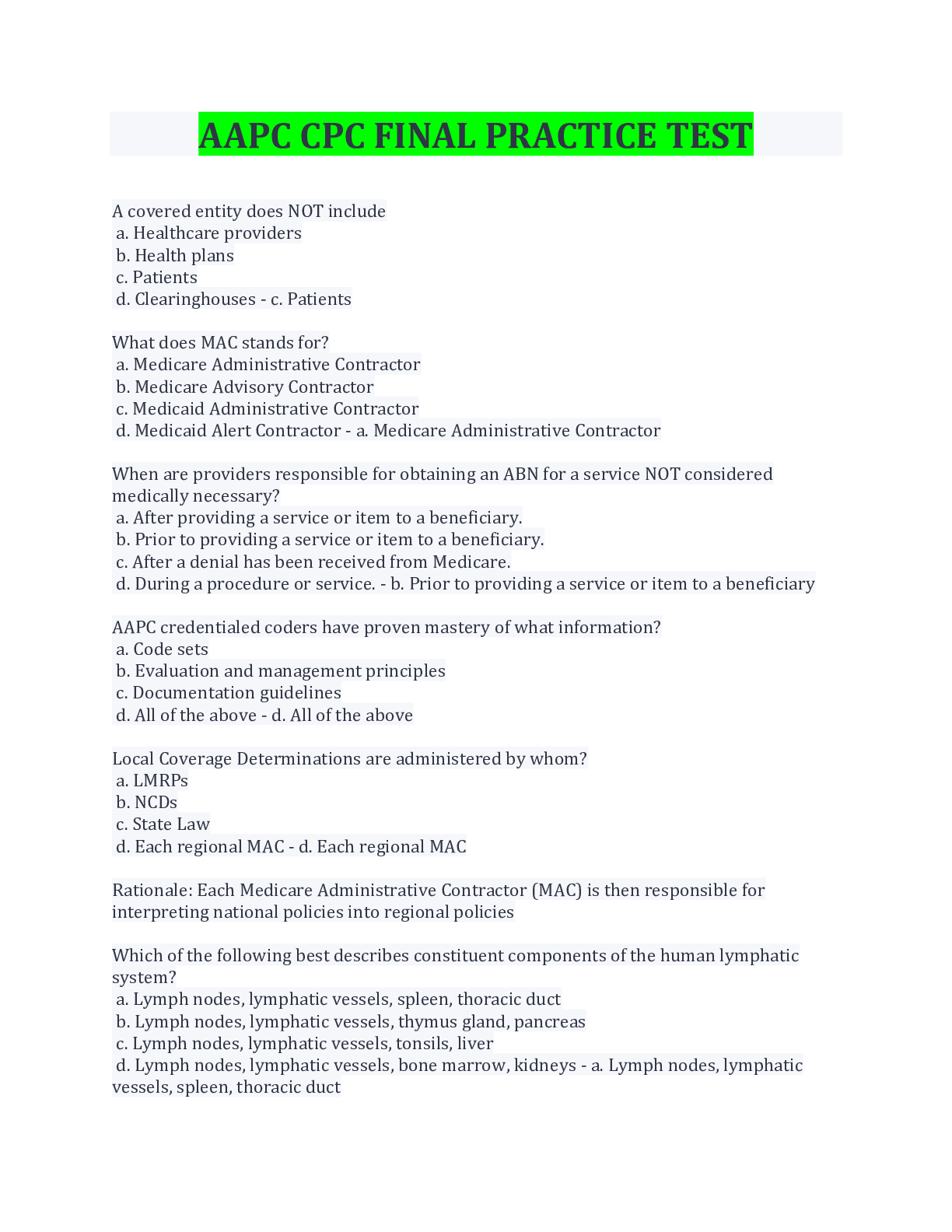
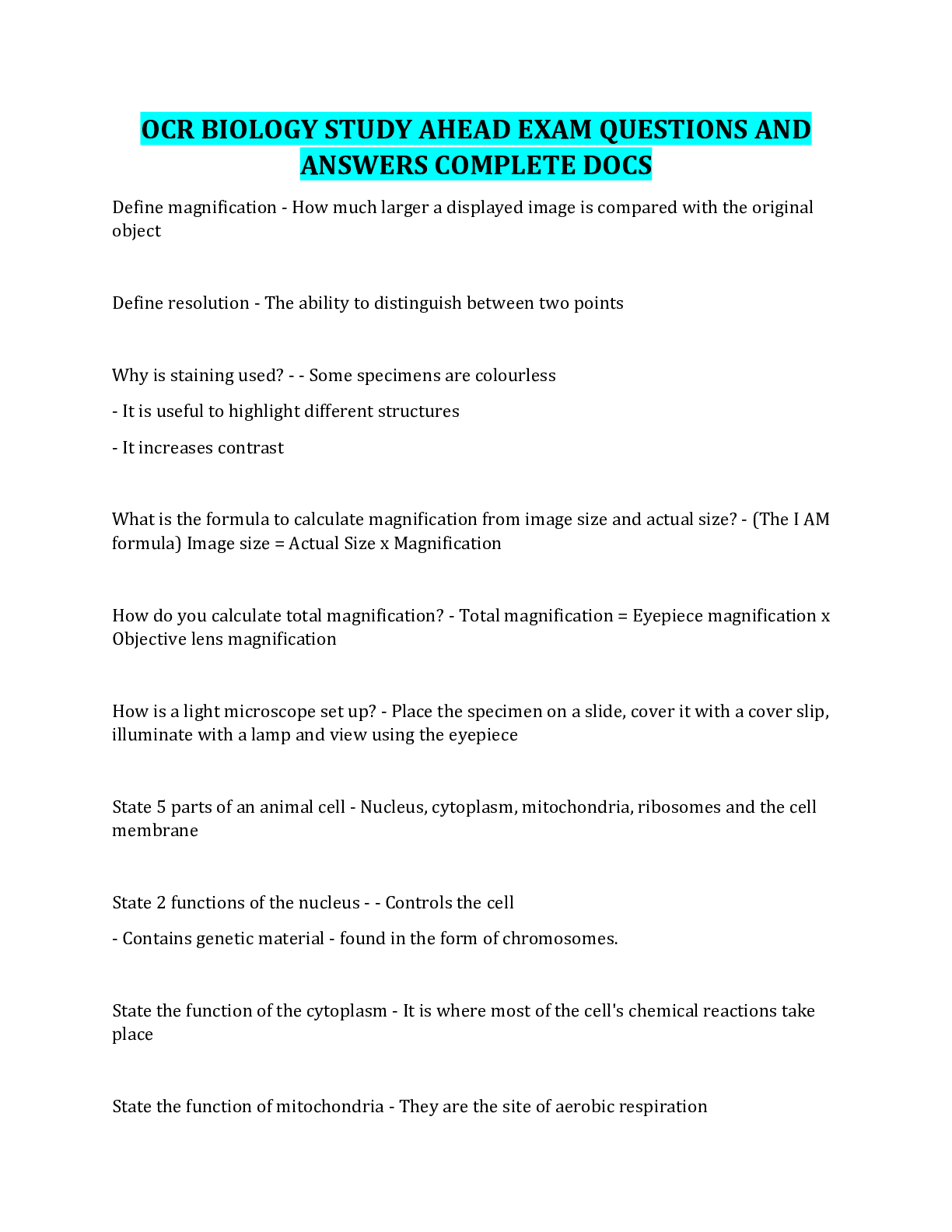
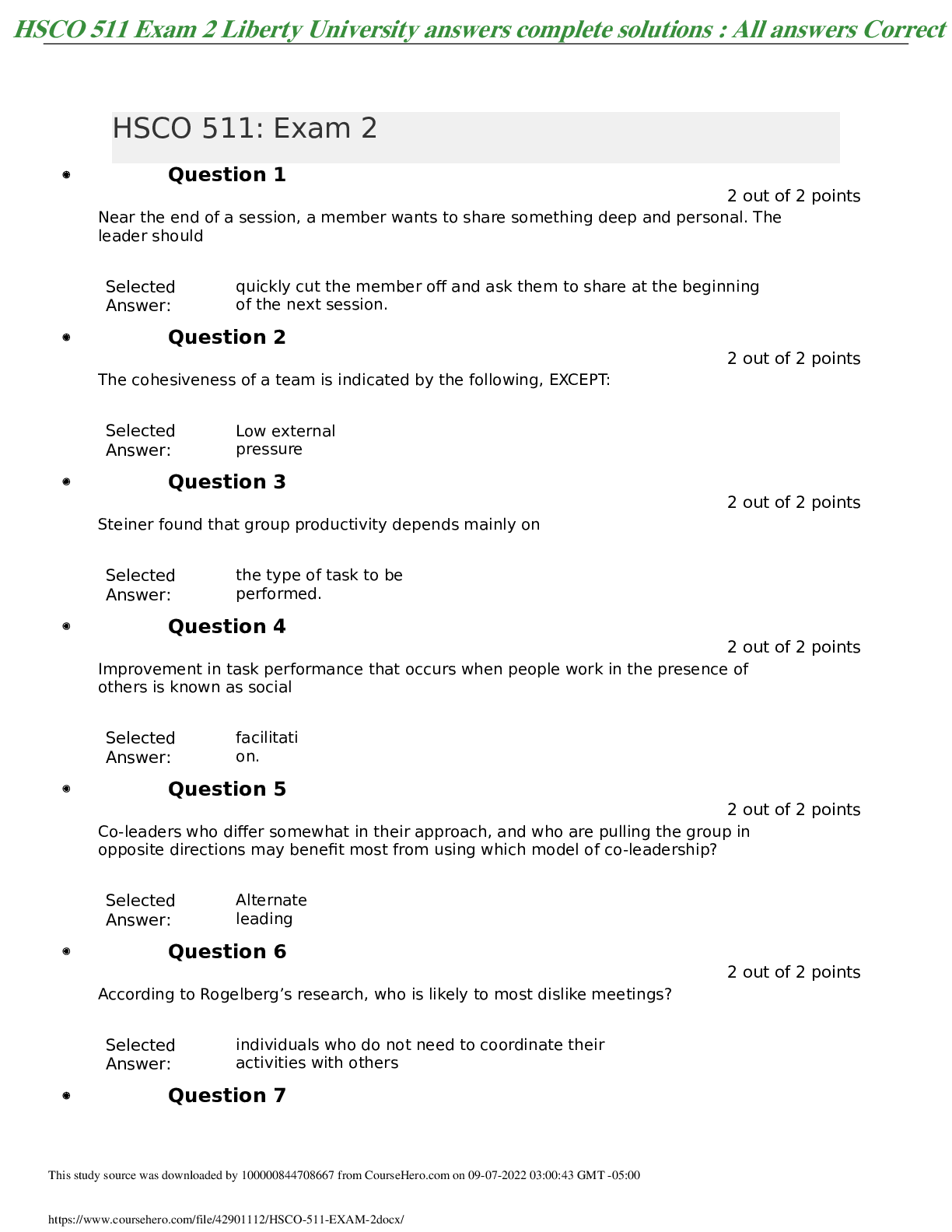
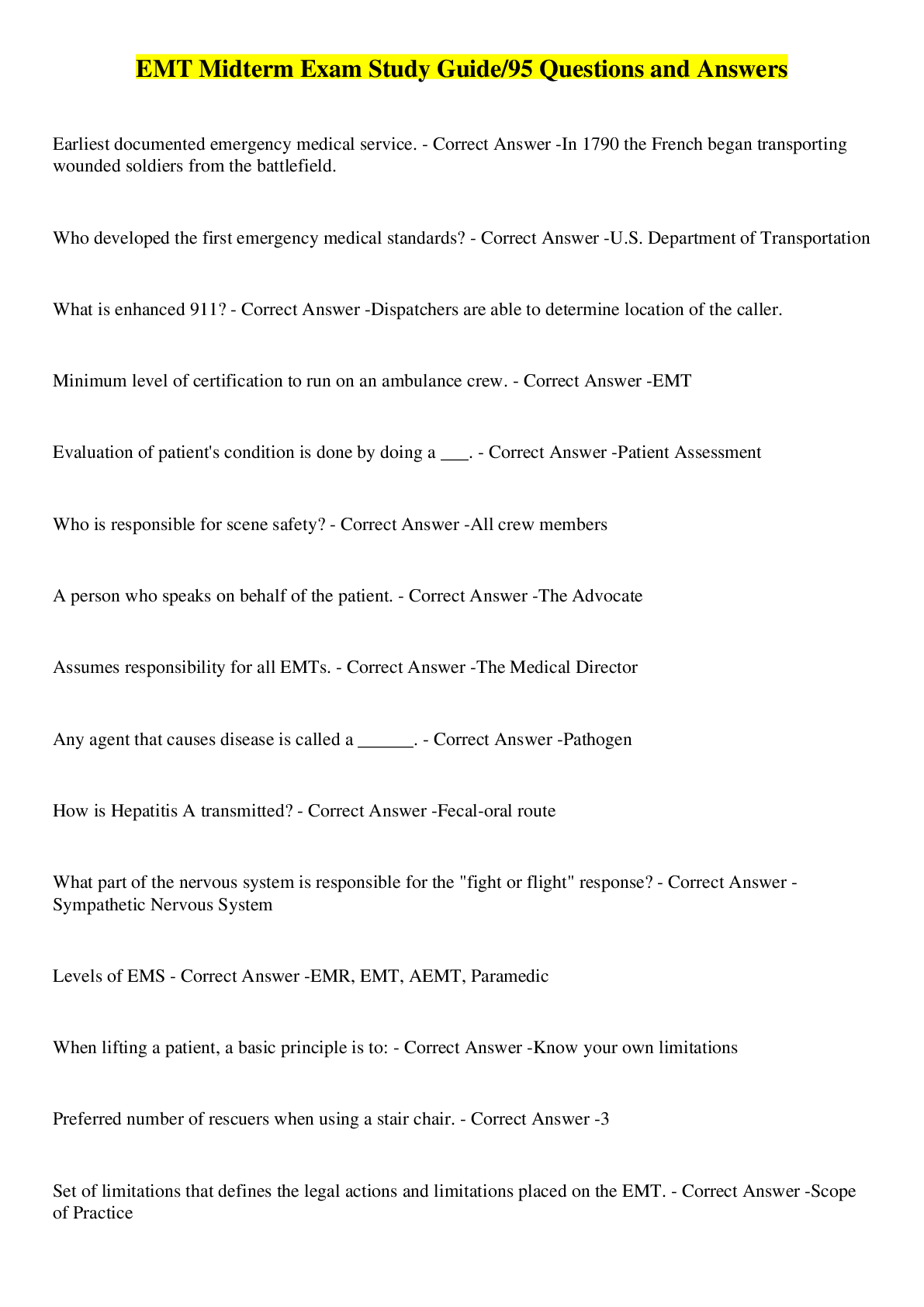
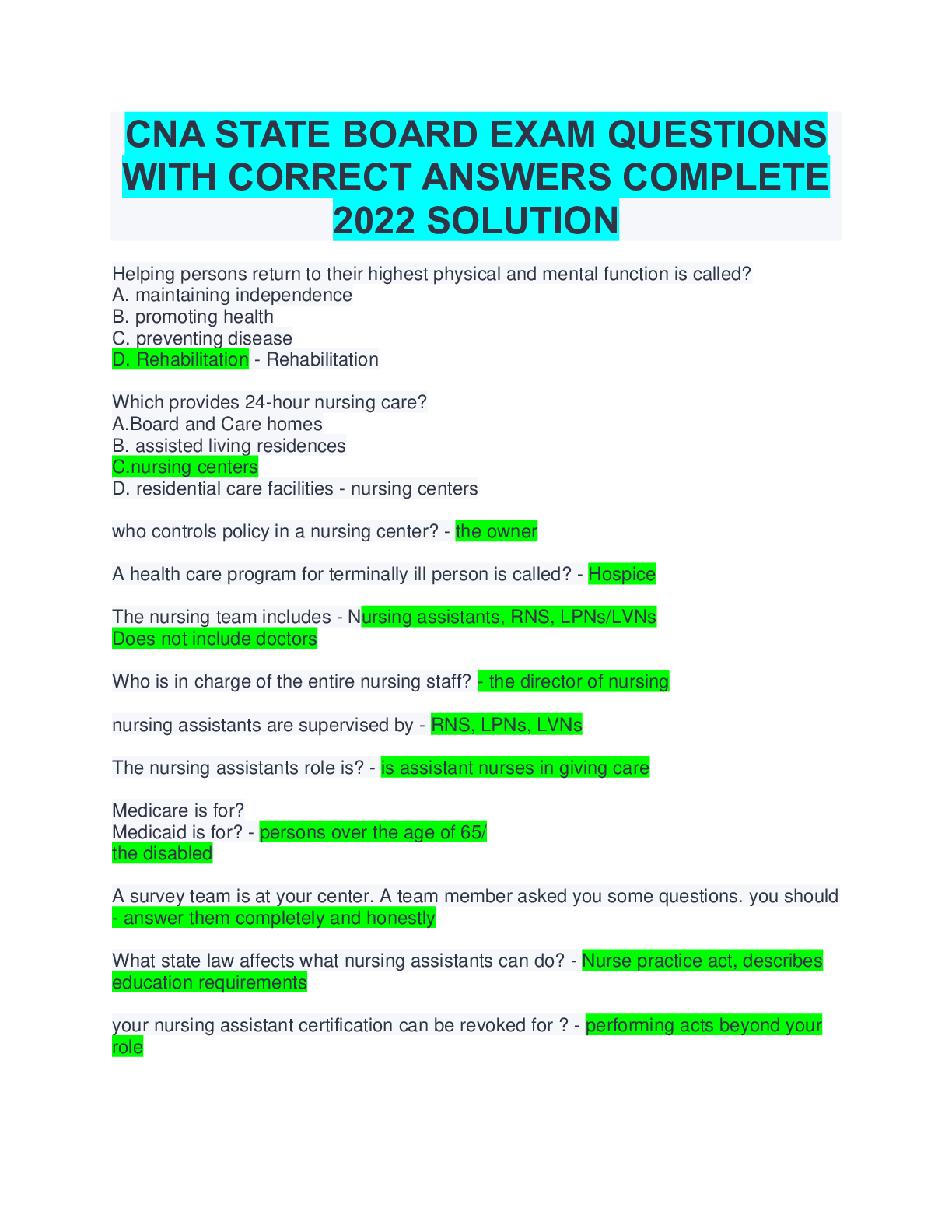

 Questions and Answers Complete Exam Solution.png)
 (1).png)
.png)

